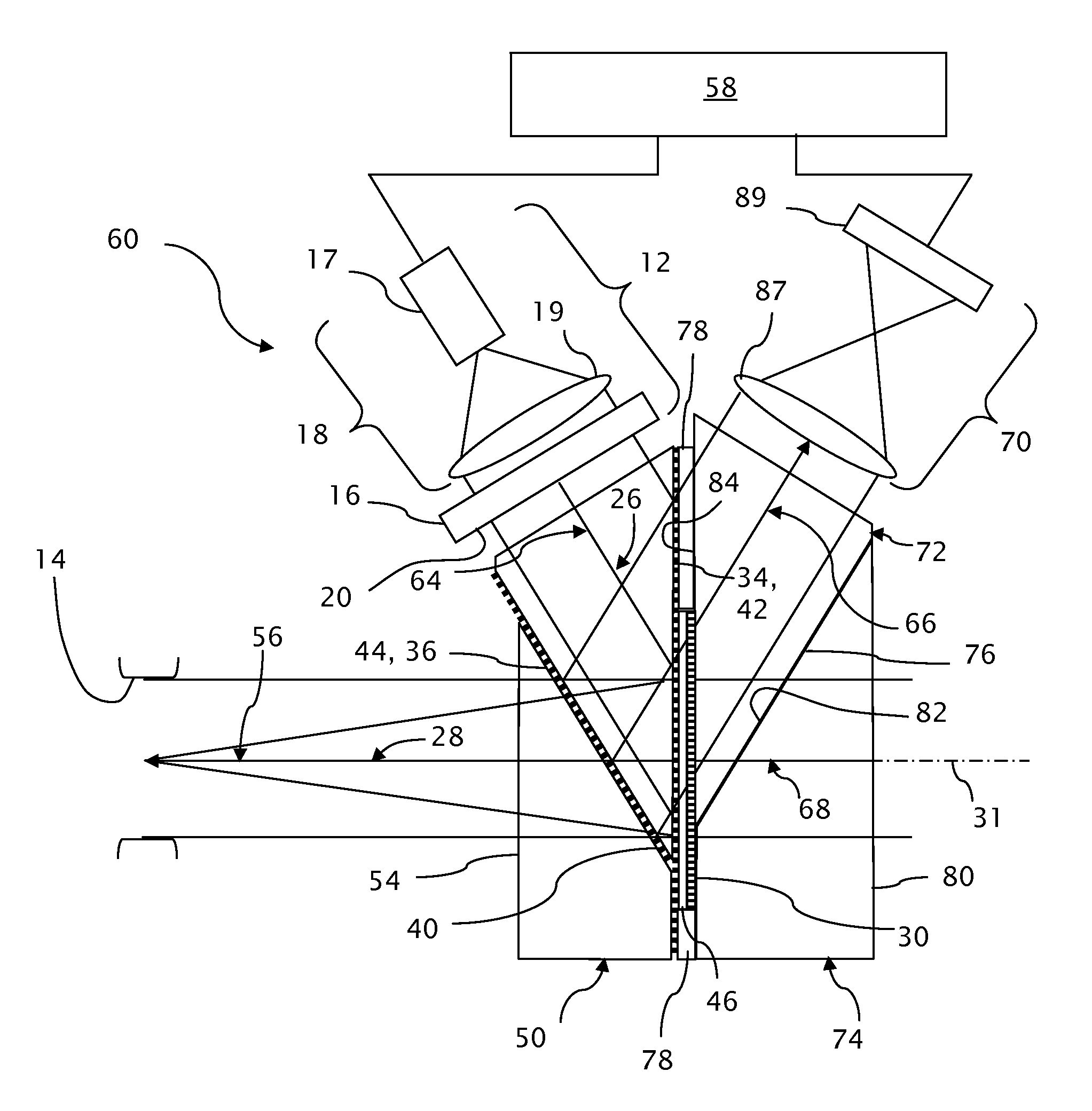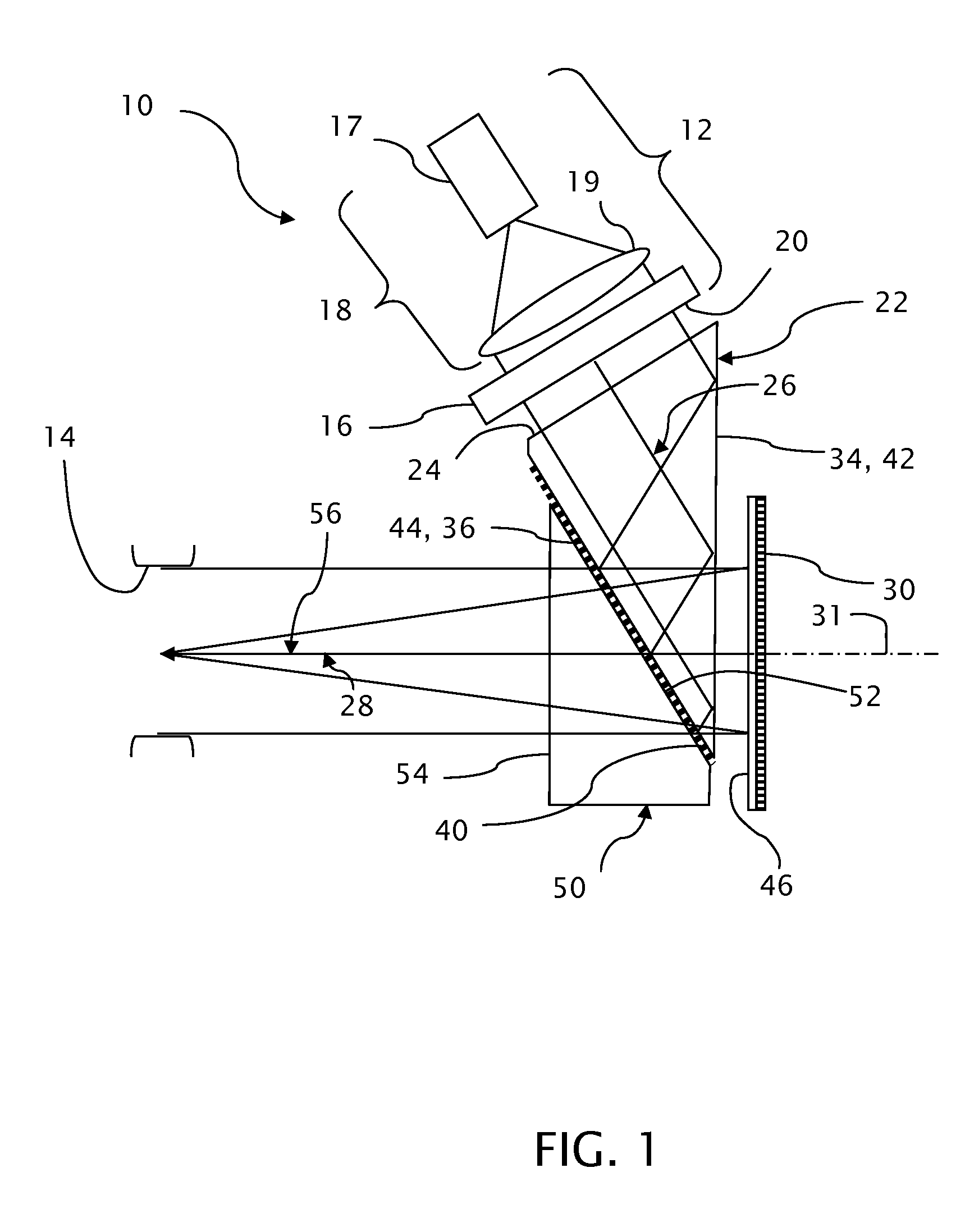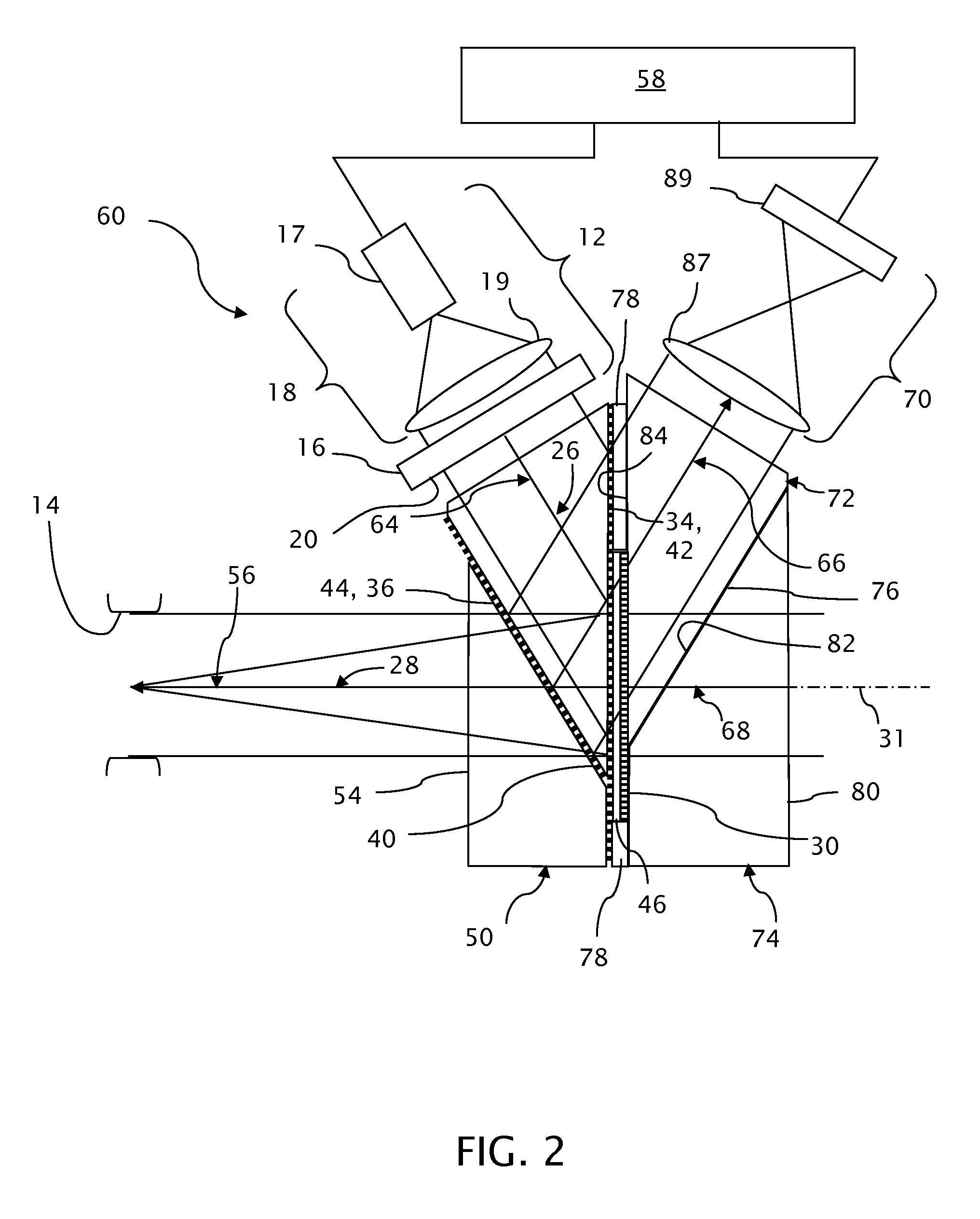Near-eye display with on-axis symmetry
a technology of symmetry and near-eye display, applied in the field of near-eye displays, can solve the problems of undesirable addition of thickness, and achieve the effect of reducing the problems of image distortion and chromatic aberration
- Summary
- Abstract
- Description
- Claims
- Application Information
AI Technical Summary
Benefits of technology
Problems solved by technology
Method used
Image
Examples
Embodiment Construction
[0021]A near-eye display 10, as depicted in FIG. 1, includes an image generator 12 for producing a succession of images, such as video images, that are projected as virtual images into an eyebox 14. The image generator 12, which can take a number of forms, preferably combines a spatial light modulator 16 with an illuminator 18 that uniformly illuminates the spatial light modulator 16. The illuminator 18 preferably includes a light source 17, which can be formed by one or more light emitting diodes or other known sources including lamps, and a condenser 19 that collects light from the source 17 and evenly illuminates the spatial light modulator 16. Light patterns are produced within the spatial light modulator 16 by differentially propagating light on a pixel-by-pixel basis in accordance with a video input signal from a video source (not shown). For example, the spatial light modulator 16 can comprise a controllable array of liquid crystal diodes functioning as individually addressab...
PUM
| Property | Measurement | Unit |
|---|---|---|
| angle | aaaaa | aaaaa |
| angle | aaaaa | aaaaa |
| angle | aaaaa | aaaaa |
Abstract
Description
Claims
Application Information
 Login to View More
Login to View More - R&D
- Intellectual Property
- Life Sciences
- Materials
- Tech Scout
- Unparalleled Data Quality
- Higher Quality Content
- 60% Fewer Hallucinations
Browse by: Latest US Patents, China's latest patents, Technical Efficacy Thesaurus, Application Domain, Technology Topic, Popular Technical Reports.
© 2025 PatSnap. All rights reserved.Legal|Privacy policy|Modern Slavery Act Transparency Statement|Sitemap|About US| Contact US: help@patsnap.com



